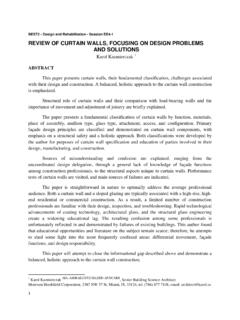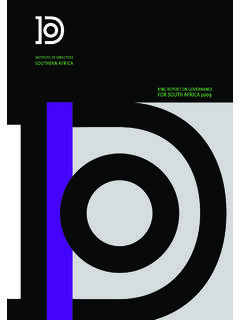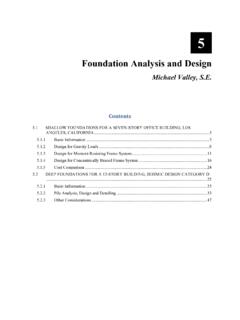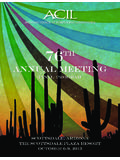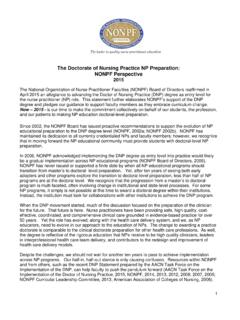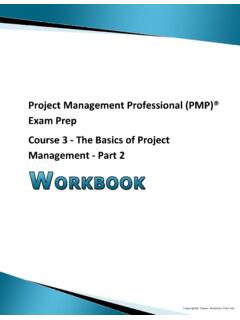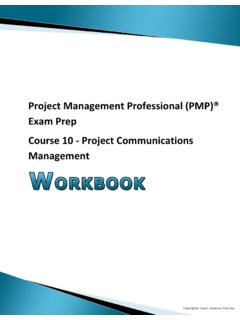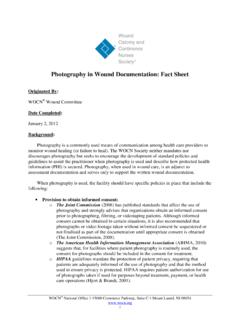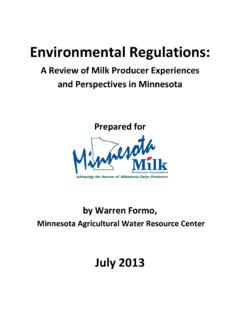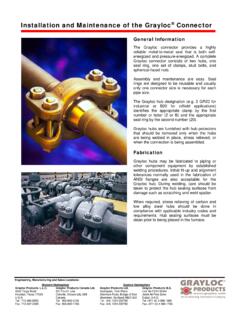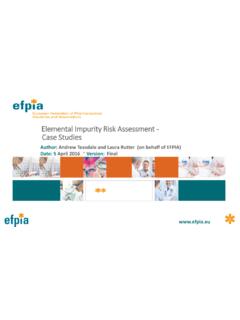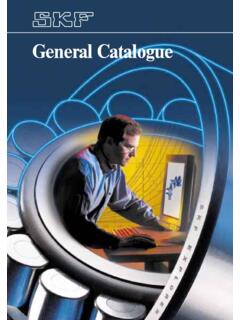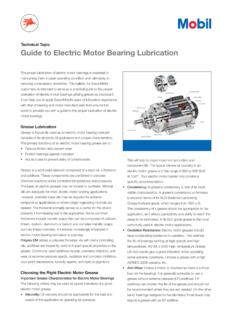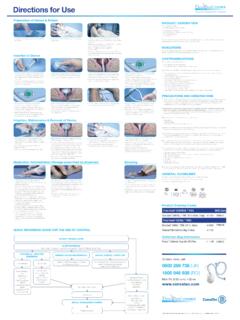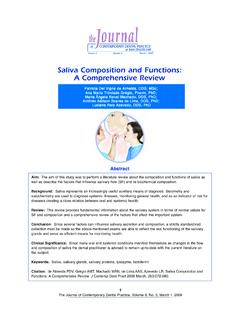Transcription of Safe Handling of Magnesium
1 Safe Handling of MagnesiumThe use of Magnesium is a rapidly growing commodity on a worldwide basis and millions of tons of Magnesium have been melted and processed without incident by following well-developed safety practices. With proper safeguards, Magnesium fires or explosions can be brochure will describe those certain forms, like a thin ribbon, Magnesium ignites quite easily. In solid forms, such as Magnesium ingots, ignition is is an excellent conductor of heat and as a practical matter the entire piece must be brought to a temperature near the melting point before ignition will occur. Normally this will not occur unless the solid Magnesium piece is surrounded by a fire from other must be exercised with Magnesium when it is: in a molten state. in a finely divided form such as chips, granules or powder.
2 Involved in a general conflagration (fire). Magnesium Is A Combustible MetalPAGE INTENTIONLY LEFT BLANK (INSIDE FRONT COVER)The information contained in this publication is general in nature and is not intended to replace applicable local, state, and national regulations that deal with the processing, storage, or transportation of Magnesium . Specific situations must be dealt with as appropriate and as described in your company s safety program. The International Magnesium Association and its members make no warranty, expressed or implied, for the information presented MOLTEN MAGNESIUM6 AIRBORNE Magnesium IS DANGEROUS8 Magnesium STORAGE AND TRANSPORTATION9 CATCH IT WHILE IT S SMALL10 IMA MISSION STATEMENTSafe Handling of MagnesiumFebruary 20201000 Westgate Drive, Suite 252 Saint Paul, Minnesota 55114 USAP hone: +1 651-379-7305 Fax: +1 651-290-2266 Copyright 2020 International Magnesium Association.
3 All Rights MOLTEN Magnesium 4 Molten Magnesium , with a melting point of approximately 650 C. will cause severe burns upon contact with the skin. Those who work around molten Magnesium must wear adequate protective clothing and equipment. This includes: Safety glasses Hard hat with safety shield Fire-retardant clothing Safety shoes Spats and safety boots recommended to prevent molten metal from entering the boot Insulated gauntlet glovesAll safety clothing and equipment should be tested to ensure that the protection is adequate. First aid provisions should include fire blankets and safety showers. All personal protective equipment should meet applicable statutory Magnesium will ignite and burn when exposed to air so it must be protected during the melting operations.
4 The most common practice today, although not universal, is to use a protective gas such as sulfur dioxide (SO2) in very low concentrations mixed with Nitrogen, Argon, or air and carbon dioxide. Sulfur dioxide forms a film on the melt surface which prevents excessive oxidation. The traditional protective measure was to cover the surface of the Mg melt with molten chloride salts; that prevented air contact at the surface. Other cover gases such as HFC-134a, 3M Novec mixed with nitrogen or in air and carbon dioxide can be is also an acceptable form of protection although many countries are moving towards elimination of this gas due to its effects on the CLOTHING AND EQUIPMENTPROTECTION OF THE MELTGAS FEEDING SYSTEMA rprotective gasesN SO2 Molten Magnesium can react exothermically with iron oxide in a thermite reaction which generates temperatures in excess of 2,200 most Magnesium melting pots are made of steel it is extremely important to keep the inside area of the pot clean and free of scale.
5 Likewise, scale (oxides of iron) should be removed regularly from the furnace to prevent a reaction with molten Magnesium in the event of a pot failure. The refractories used for the furnace should be high in alumina or magnesia because molten Magnesium can react violently with even small amounts of silica (often present in ceramic materials). Run-out pans should be provided in the event of a pot failure and should be kept clean and free of moisture and scale at all thickness and appearance (cracks) should be periodically the Handling of molten Magnesium requires care and certain precautions, many producers and foundries world-wide routinely melt and process thousands of tons each year without incident by strictly adhering to well-proven safety practices.
6 5 The gas feeding system should be designed to evenly distribute cover gases over the melt because high concentrations of cover gases can severely corrode the steel cover and melting pot. Corrosion products, such as iron oxides, can violently react with molten Magnesium and could cause an system should be designed to counteract circulating air from disturbing the cover gas blanket. Dry, Class D fire extinguishing materials, such as G-1 powder and foundry flux, should always be kept foundry structures should be built with non-combustible materials and the floors around melting operations should be hard burned or vitreous paving block. The heat from molten Magnesium can release the water of hydration in concrete which will cause it to spall, sometimes should be grounded to protect against lightning EXTINGUISHING MATERIALSFOUNDRY STRUCTUREA utomatic sprinklers should not be installed over melting operations, heat treating furnaces, or in storage/production areas containing Magnesium in finely divided water comes in contact with any molten Magnesium , whether it is in the foundry furnace or a puddle in a burning building, there could be an explosion.
7 The water will expand up to 1,000 times its original volume and in so doing may throw molten metal a considerable distance. In addition, Magnesium s great affinity for oxygen will dissociate the water releasing flammable hydrogen which can add fuel to fires and materials, such as ingots, alloys or tools, that are introduced into molten Magnesium must be preheated well above 100 C to drive off all moisture or other volatile species. Any cold surface could be a source of moisture condensed from the atmosphere. As mentioned previously, any water or condensed moisture presented on a cold surface will expand up to 1,000 times its original volume when in contact with molten metal; trapped moisture exposed to intense heat can propel molten metal considerable distances during the expansion.
8 KEEP MELTING POT CLEANPREHEAT INGOTS AND TOOLSPREVENT CONTACT WITH WATER 6 AIRBORNE Magnesium IS DANGEROUSFINELY DIVIDED FORMS HOUSEKEEPINGM agnesium in finely divided forms such as powders, grinding residues, and swarf from machining or sawing is readily ignitable and can ignite spontaneously in the presence of water or cutting fluids containing fatty acids. Hydrogen will also be produced introducing an explosion hazard in addition to Magnesium dust will burn with explosive violence if ignited. Smoking and the use of open flames or electrical welding must be prohibited in areas where Magnesium is being machined, sawed or ground. All electrical connections and motors must be explosion-proof. Non-sparking conductive tools must be used where Magnesium dust may be present. It is also recommended that all transfer containers and equipment be grounded to prevent sparks from static the accumulation of large amounts of finely divided Magnesium in the work area.
9 Place in non-combustible, covered containers and transfer to an isolated storage EQUIPMENT Safety glasses with side shields or a full-face shield should be worn by the opera-tor at all times. Clothing should be easily removable, made of flame-resistant, smooth fabric with non-ferrous fasteners and no exter-nal pockets or cuffs that could accumulate fines. Safety shoes should have no exposed steel parts. Dust masks or respirators should be used where dust levels could exceed limits set by applicable health COLLECTOR SYSTEMSG rinding dust should be captured in a wet dust collector system that is engineered for Magnesium and dedicated to Magnesium use only. The entire system should be grounded, and the power supply to the exhaust fan and the liquid level controller should be system should be designed to avoid dry dust accumulation at any point before being converted to sludge, as well as to avoid dry dust contacting any high-speed moving parts.
10 The collector must also be designed so that hydrogen generated in the sludge is vented at all times even in the event of a power from any source can ignite the grinding dust and the resulting fire can travel through the entire from the liquid separators should be removed at least daily and transported to the disposal site or staging area in covered and vented steel drums. 7 PNEUMATIC CONVEYING Magnesium shall be pneumatically conveyed with air, nitrogen and inert gas such as argon or helium. In all cases the conveying gas shall have a dew point such that no free moisture can condense or accumulate at any point in the ducts shall be fabricated of conductive material. Ducts shall be electrically bonded and grounded to minimize accumulation of static charge.
